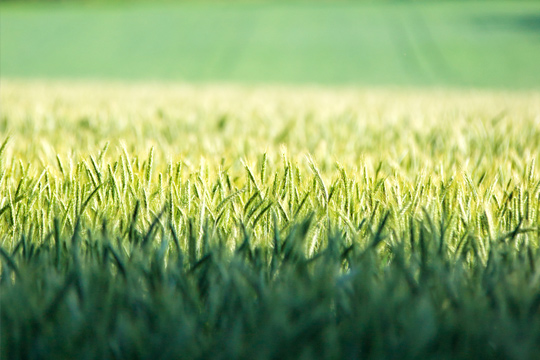
Reducing Food Waste in Foodservice
October 16, 2018 by Doreen Garelick, Dietetic Intern
Our intern Doreen attended a food waste summit for restaurants and compiled these tips to help food service operators redirect…
Nutrition 101
September 25, 2012

Culinary Nutritionist Natalia Hancock gives a definition of gluten before giving some examples of gluten-free alternatives.
You may have recently noticed an increased amount of media attention regarding gluten-free diets. But what exactly is gluten, and why would we want to eliminate it from our meals?
Gluten is a component made up of two proteins present in wheat called gliadin and glutelin. When these two proteins cross-link to each other, they contribute their physical properties (elasticity, viscosity, and extensibility) to dough to help it rise, maintain its shape and provide a chewy texture. Gluten is the major protein present in wheat, and can also be found in barley, semolina, bulgur, durum, farina, kamut, spelt, faro, rye, malts, oat flours, triticale, or any byproducts made from those grains.
A small percentage of people have a condition called celiac disease, where the ingestion of foods containing gluten causes an allergic reaction in the small intestine. The associated inflammation causes damage to the inner lining of one’s small intestines (villi), and if left unchecked could impair one’s ability to absorb nutrients and lead to malnutrition.
Most people with celiac disease present with general GI complaints such as diarrhea, bloating and pain. Since celiac disease can mimic the symptoms of other GI conditions and sometimes does not present with symptoms at all, it’s important to make an appointment with your doctor to assess if you are allergic to gluten.
While there is no treatment for celiac disease, it can be effectively managed by eliminating all sources of gluten from the diet to reduce inflammation in the small intestine. Arrowroot, buckwheat, quinoa, corn and cornmeal, flax, millet, soy, tapioca and rice can be substituted for grains containing gluten.
If an individual is not allergic to gluten, it is unnecessary to remove gluten from one’s diet! Weight loss reported while eating a gluten-free diet is a result of removing calories from gluten-containing carbohydrates from one’s diet. While this decreased caloric intake may appear favorable, there are many nutrients present in wheat and grains containing gluten that are integral and beneficial to maintaining a healthy body, such as thiamin, niacin, folate, iron, soluble and insoluble fiber and calcium.
For more nutrition advice and information on living a healthy lifestyle, read our other Nutrition 101 posts.

October 16, 2018 by Doreen Garelick, Dietetic Intern
Our intern Doreen attended a food waste summit for restaurants and compiled these tips to help food service operators redirect food waste from landfills.
Nutrition 101

Nutrition 101
September 26, 2018 by Doreen Garelick, Dietetic Intern
Ever notice headlines about rapid weightloss? Dietetic Intern Doreen Garelick looks deeper into a recent eye-catching headline to see if there's any truth behind it.
Connect
 Follow us on Twitter
Follow us on Twitter Friend us on Facebook
Friend us on Facebook Follow us on Pinterest
Follow us on Pinterest Follow us on Instagram
Follow us on Instagram Read our Blog
Read our Blog Watch videos on YouTube
Watch videos on YouTube Watch videos on Vimeo
Watch videos on Vimeo Connect with us on Linkedin
Connect with us on Linkedin Find us on Foursquare
Find us on Foursquare
Tweets by @SPEcertifiedBlog Search
Categories
SPE Certified Newsletter
Sign up for news on the latest SPE-certified venues, events and SPE updates.
We will never share your personal information with a third party.